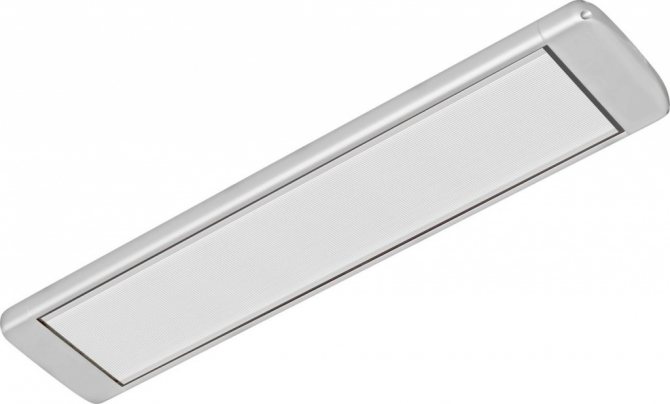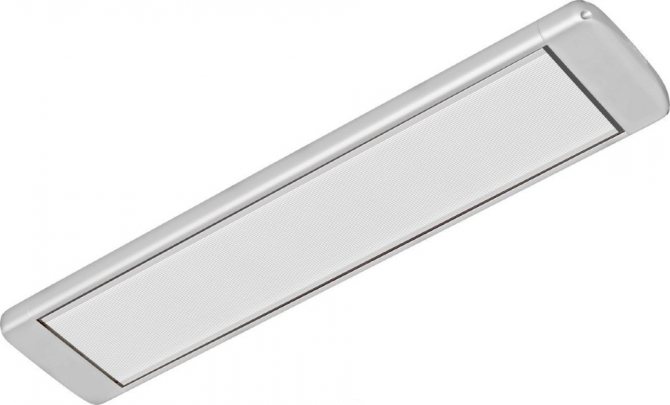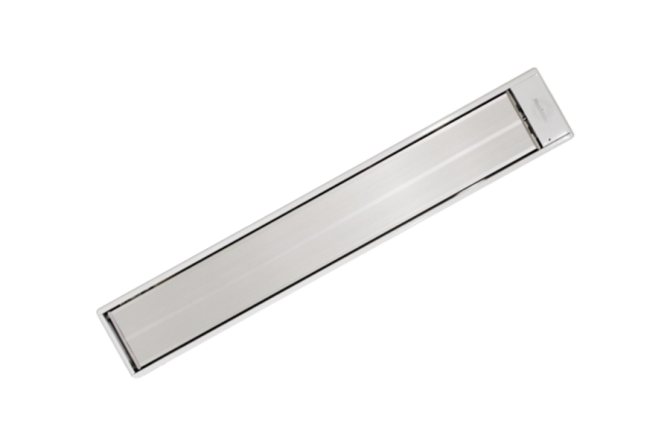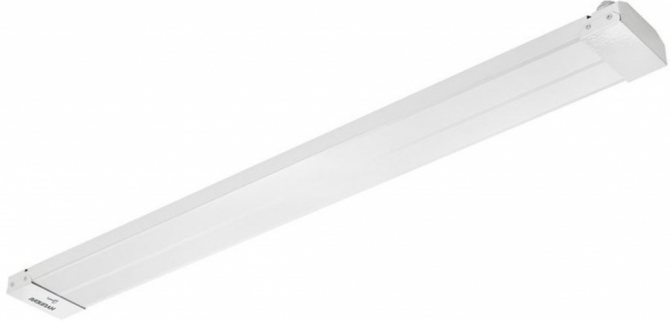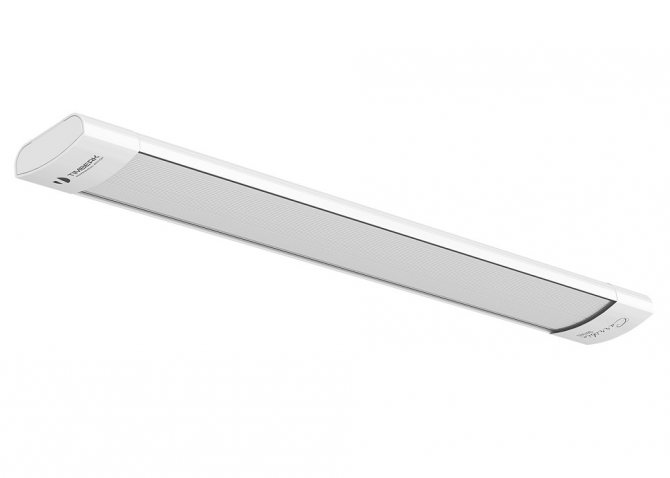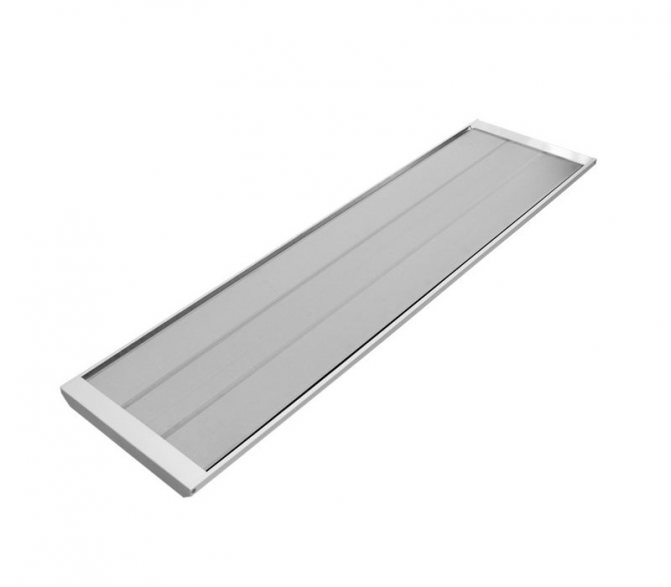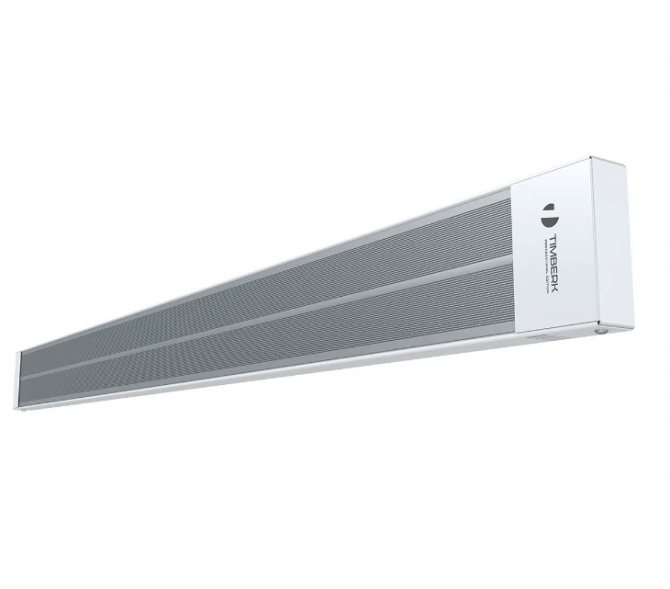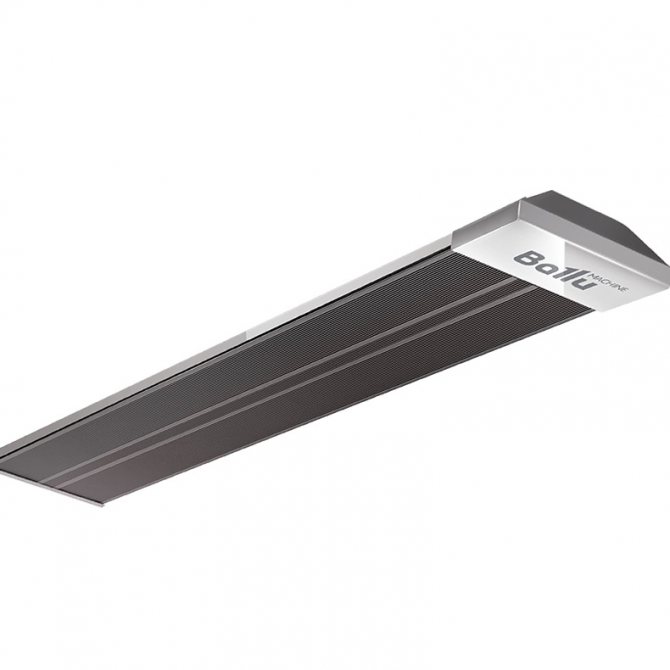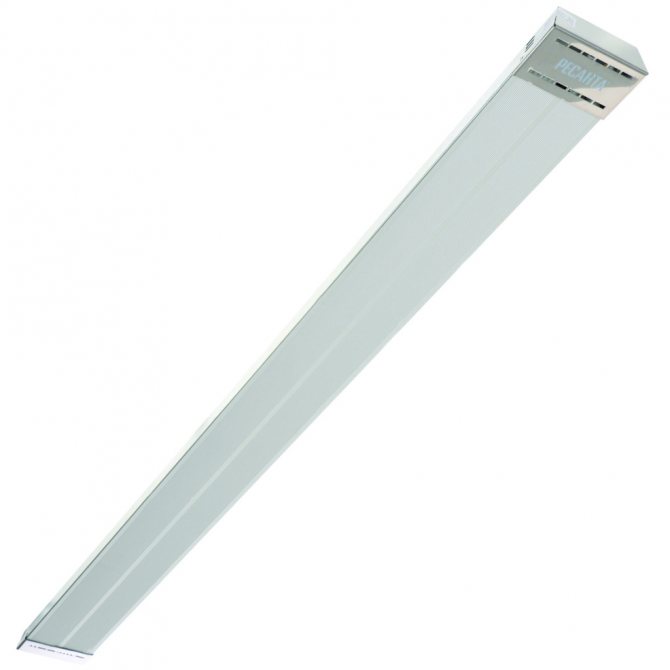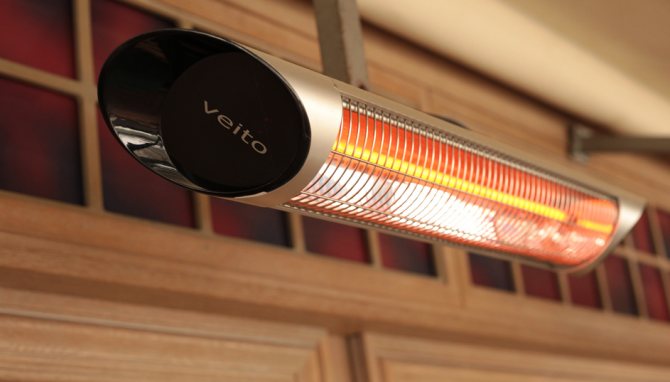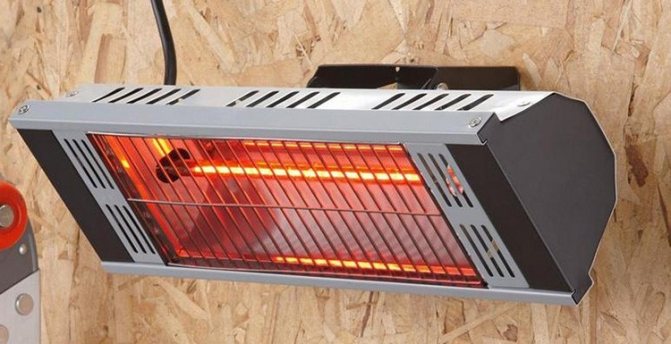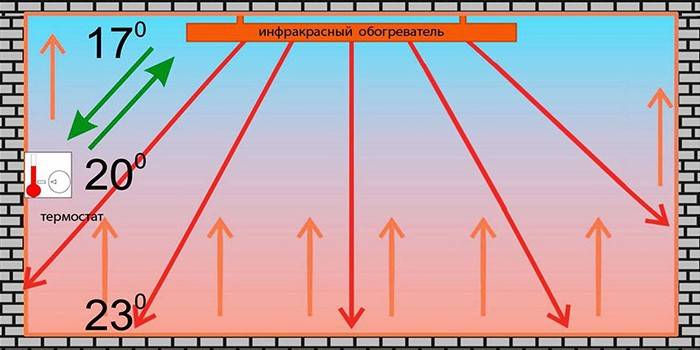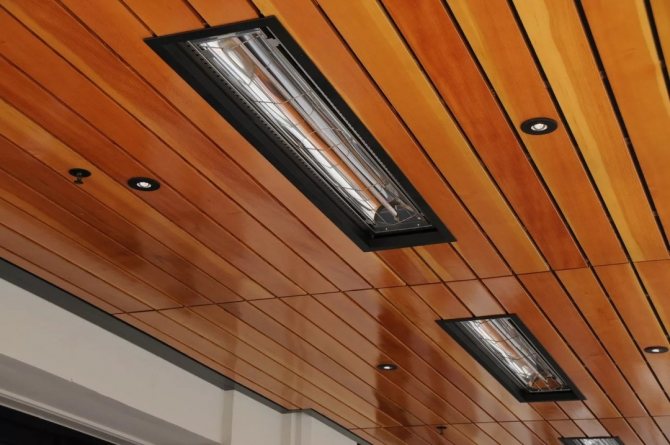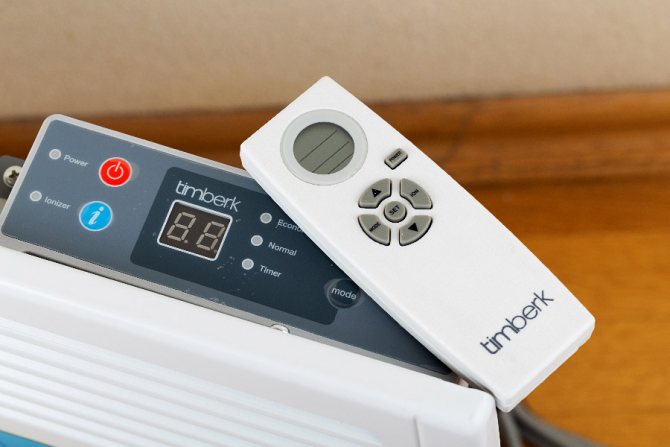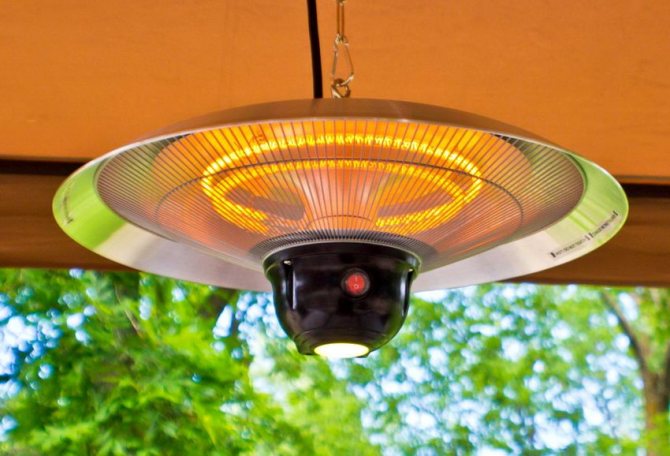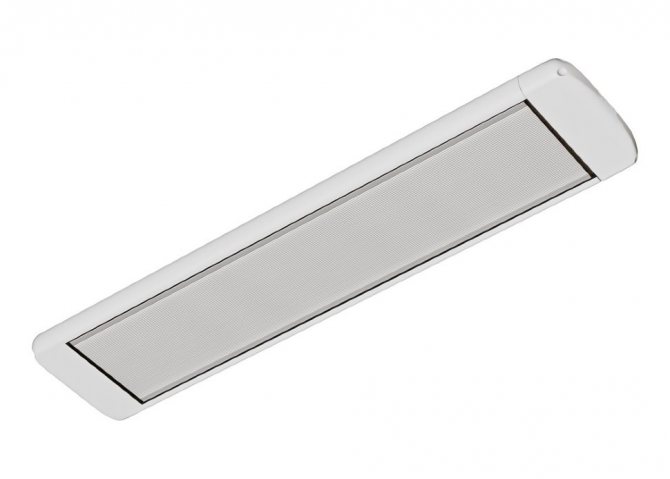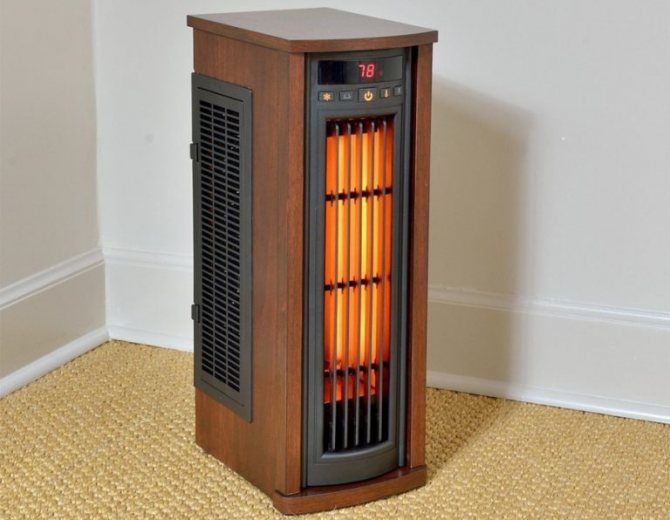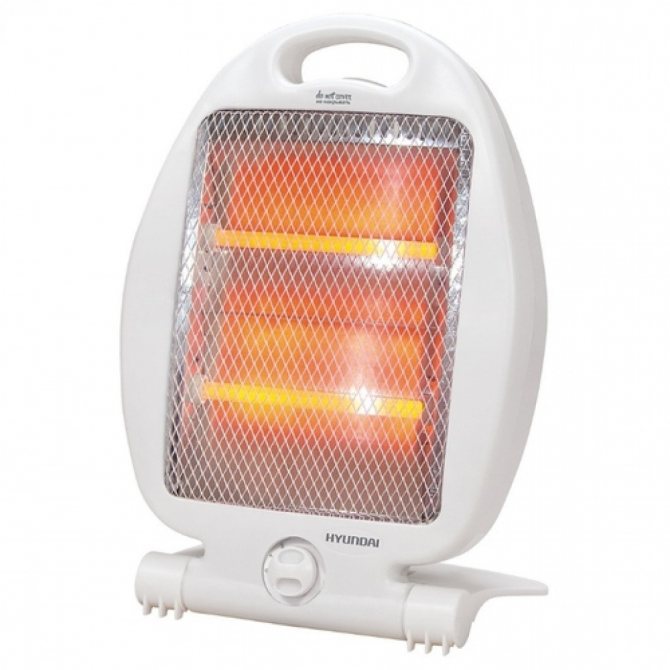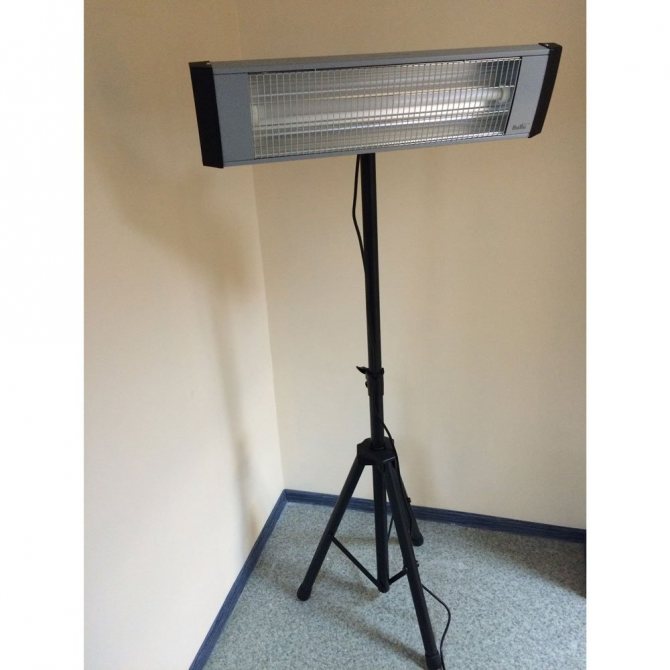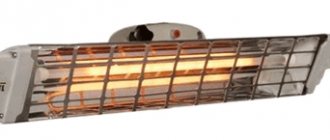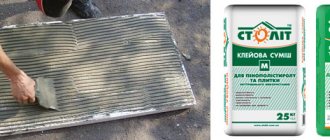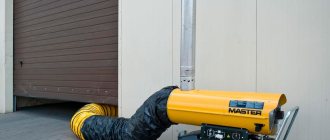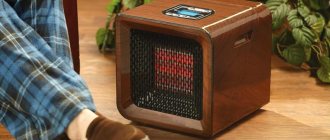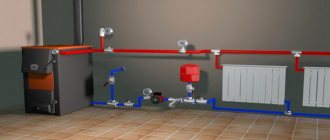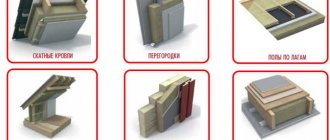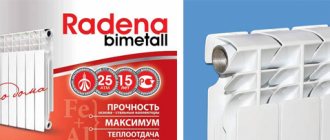What are wall mounted infrared heaters?
Infrared heaters are divided into several types, depending on the method and place of attachment.
What is it for and where is it used?
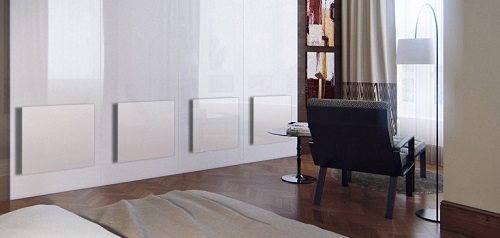
Wall heaters are heating devices that work thanks to the power supply from the mains.
They got their name as a result of the fact that they are placed directly on or in the wall, and thanks to the emitted rays they heat objects in the room.
Such a device can be used not only for additional, but also for the main heating. Do not be afraid to place several such devices in a room at once.
Their main plus is that they do not dry the air, keeping its natural humidity.
Heating occurs due to the heating of the surrounding objects. They give pleasant warmth.
Some models are equipped with a thermostat from the factory. It allows you to adjust the room temperature to the best for you. Such models are more expensive, but they work much more efficiently.
Depending on the chosen model, you can get other useful functionality. For example, a timer, an auto-off and auto-on system, and so on.
How it works: device and principle of operation
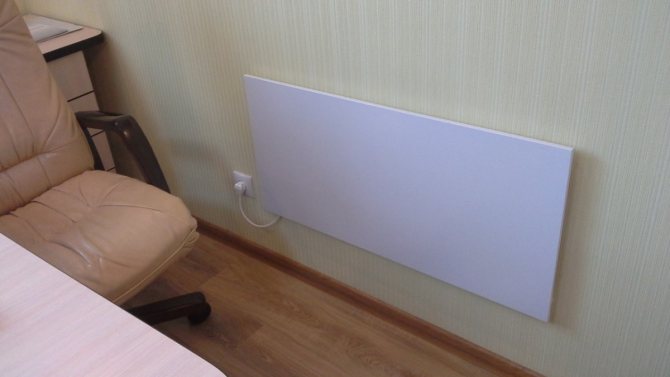

Each device, aimed at heating the room, works in a special way. Infrared heater is no exception. It consists of a ceramic panel that is heated by a special element. After the temperature reaches the required mark, the reflector starts up. Heat is reflected from the mirror surface and transferred to the room in the form of rays. The rays encounter an obstacle in the form of objects on their way. At the same time, it does not matter at all what it is: a plant, a toy, fabric, walls. Objects begin to heat up, giving off heat to the room.
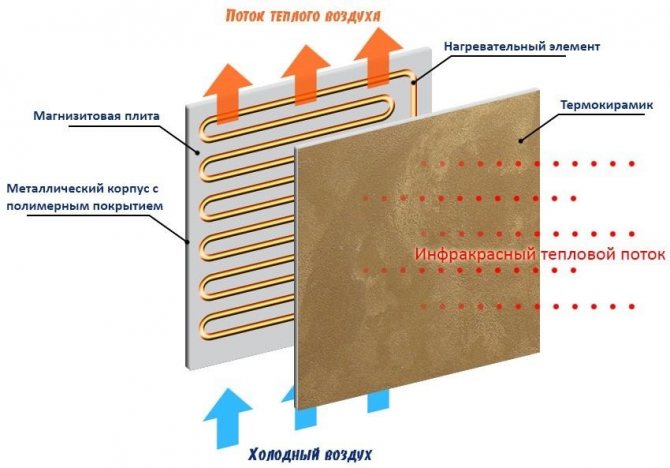

Thanks to this principle of operation, the air remains moist, households do not complain of dryness and headaches. Scientists compare the principle of operation of such devices with the action of the sun. Its rays also glide over the surface, heating only individual objects.
Best infrared heaters
Polaris PMH 2007RCD
- power 2000 W;
- floor mounting;
- micathermic heater;
- electronic control;
- weight 4.5 kg;
- the price is about $ 100.
An excellent option for floor mounting, suitable for heating a room of a decent area. The model boasts electronic controls, a remote control and a timer. The heater promises to be as safe as possible to use, as it received a shutdown function in case of overheating and overturning. The only thing users complain about is the large timer step - 30 minutes. The rest is an excellent model that fully meets expectations and copes with the tasks assigned to it.
Vitesse VS-870
- power 800 W;
- floor mounting;
- carbon heater;
- electronic control;
- weight 3.5 kg;
- the price is about $ 90.
Stylish floor heater, the feature of which is the possibility of turning the body. In addition, the manufacturer has provided the model with electronic control, a remote control, a timer, a thermostat, overheating and rollover shutdown functions. Of course, the device is worth it, but according to the set of characteristics it is one of the best infrared heaters. Please note that the power of the model is low, so it will not work for large rooms.
The main pros and cons of IR
Like all appliances, an infrared heater has its own strengths and weaknesses. Let's sort them out in order. Let's start with the pros:
- Large financial investments are not required for the connection process
- The kit contains all the necessary parts
- Quite simple installation
- To establish exactly the gas type, you need permission
- There is an option for installation in local areas of the room
- There is a short circuit protection so that there is no fire
And now it is worth paying attention to the disadvantages of the IR system, there are not so many of them:
- To obtain the desired conditions, during the operation of the device, the power of other devices will be reduced.
- The cost of the system itself is not small, there is a choice, but also a large number of fakes of Chinese production (important!).
To put it bluntly, the infrared heating system has no analogues, it is individual. They are trying to oust ordinary radiators from the market, but it turns out poorly, because instant heating of the IR system is difficult to overtake. You can search for such heating devices both in stores and on the Internet.
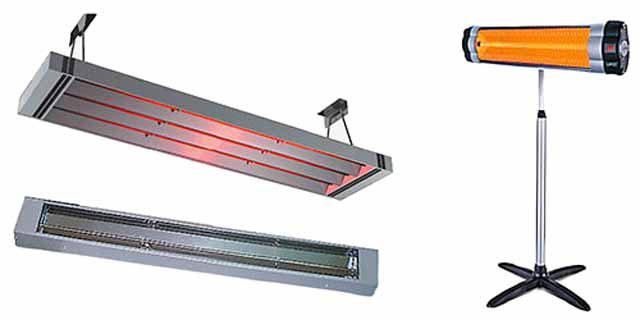

Features of connecting a thermostat to a heater
We are talking about models of the remote type, which can be included in the kit or be purchased separately from the heating device. What is important in this case:
- The heater must be at least 1.5m above the floor.
- There must be a layer of insulation under the thermostat so that the readings of the device are not distorted.
- One thermostat should only be used in one room.
- The capacities of the heater itself and the thermostatic device must match each other.
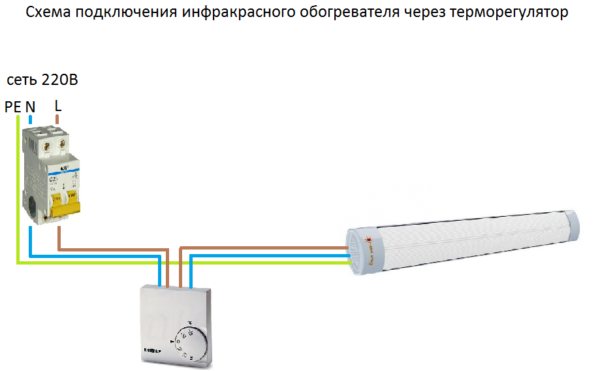

Installation rules for a wall-mounted IR heater
In order to mount a wall mounted infrared heater, it is necessary to select suitable brackets. They must be able to support the weight of the equipment and not bend under its weight. It is best to use the hardware supplied as standard. We connect the heaters to serviceable sockets with good electrical wiring. If the power of the device exceeds 3 kW, we lead a separate wire of a suitable cross-section from the meter and supplement it with an RCD.
When installing infrared heaters, you need to understand that they generate radiation that can cause headaches as a result of the banal overheating of tissues due to too intense heating. Therefore, the equipment should be located away from constant crowds and places to sleep (away from sofas and beds).
Fire fighting measures
What is important to ensure by installing and using quality IR heaters in your garage:
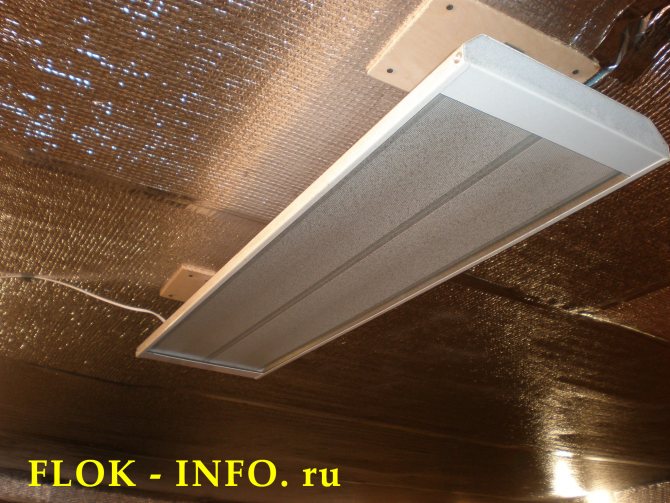

- distance from combustible materials (the minimum distance depends on the power of the device);
- parallel connection of several IR heaters;
- no twisting of wires for inclusion in the terminal (the wire cross-section is indicated in the instructions);
- lengthening of hangers (at least up to 10 cm), removing the device from the ceiling or cable channels made of easily melting materials (polystyrene, PVC).
The principle of operation of the infrared heater
Classic heating devices heat by heating the air masses - they rise, displacing the colder air down. Approaching wall or floor heaters, they heat up and leave again. This creates a continuous cycle that gradually warms up the rooms and premises. Electric heaters (the same convectors) are heated in a similar way, spending a huge amount of energy on this.
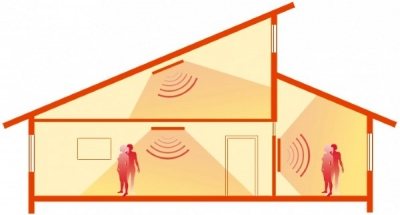

IR heaters themselves do not emit heat; they generate infrared radiation that heats up objects around.
Commercially available wall mounted infrared heaters have revolutionized the electric heating world. They have greater efficiency and are characterized by faster heating, in contrast to other units. By their principle of action, they are somewhat reminiscent of an ordinary sun. Yes, our daylight is not warming the air, but the surface of the planet, and from there the heat is transferred to the air masses.
Infrared heaters, whether floor-standing, wall-mounted or ceiling-mounted, work the same way.They are sources of infrared radiation that reaches floors, ceilings and indoor objects, causing them to heat up. The speed of propagation is instant. That is, while the convectors are puffing, trying to warm up the room, infrared heaters are already heating up the interior items with might and main, generating heat.
Some wall mounted infrared heaters use less electricity than other appliances. They also know how to heat open areas and semi-enclosed spaces.
Choosing the best appliance
When choosing a gas heater for a garage, it is necessary to proceed from specific needs. If you have to work in the garage on a regular basis and for a long time, then it is better to purchase a convector. And if you need to quickly warm up the air for half an hour, then a heat gun is most suitable.
Catalytic heaters are expensive, but absolutely fireproof and burn oxygen in the garage by an order of magnitude less. And ceramic models are cheap and long-lasting.
Mobile household heaters on bottled propane in stores are offered with a capacity of 1 to 15 kW. Finding the best option for a garage of any size will not leave much difficulty.
At the same time, you do not need to take a powerful device for a small room. It will burn excess fuel, and there will be zero sense from the generated heat at the output, since the garage structure will have to be ventilated more often.
Which wall-mounted IR heater to choose
Before you start choosing electric wall-mounted infrared heaters, you need to decide on the nature of their use:
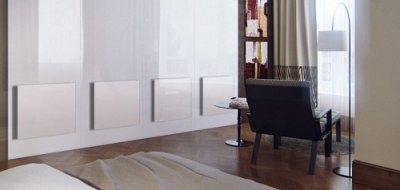

Ceramic models are perfect for creating permanent infrared heating.
- For temporary heating, film models and devices with halogen or carbon heating elements are well suited;
- Do you need constant heating? Feel free to choose micathermic models, steel or ceramics;
- Has your home been renovated? Then we recommend purchasing designer models with ceramic heaters and a glass front.
We recommend using halogen and carbon wall modifications outdoors or on the terrace.
Basic models of wall mounted infrared heaters
Wall mounted IR heaters are represented by a whole army of all kinds of models. They differ in their power, external data, the presence and absence of thermostats, design, fasteners, the presence of protective modules and many other factors. Let's take a look at the most popular models and take a quick look at their characteristics.
Heaters Royal Clima RIH-R2000G
Quite good infrared devices, the power of which varies from 0.7 to 3 kW. According to the manufacturer, they will last at least seven years. The heaters are enclosed in gray neutral cases, therefore they harmonize well with white ceilings. However, they can be hung in almost any interior, except for a designer one. These devices belong to the ceiling, but nothing prevents them from being mounted on the wall. By the way, mounting brackets are included in the kit.
Equipment types
Depending on the technical parameters, radius of action, designs, they can be divided into two categories.
Industrial
These are high-power devices that are perfect for car washes, workshops, boxes, tire changers. Most often, they are mounted on the ceiling and adapted for rooms with a height of 3-8 m, since their close location to objects can be dangerous. The source of energy for them can be electricity, gas, diesel fuel. The last two categories require a chimney arrangement.
Household
Compact devices of low power, through which infrared local heating of the garage is provided. Depending on the design of the model, they can be installed permanently under the ceiling, on the wall, or mobile move between zones where heating is needed. These are usually electrical devices.
How to choose the right IR device for a summer residence
When deciding how to choose an infrared heater for a summer residence, you must first:
- Decide on the place of installation of the heating device (ceiling, wall, floor).
- Choose the appropriate power, which depends on the goals (to warm up a certain section of the room for a comfortable stay in it, or to heat the entire room as the main source of heating).
- Decide what type of thermostat you need (mechanical, electronic, with or without remote control, built-in or remote type).
- Determine the availability of additional functions (protective sensors against overheating, emergency sensors when overturning, etc.).
- It is also important to know what amount can be allocated for the purchase of an IR heating device with a thermostat.
- You need to pay attention to manufacturers and their best and high-quality models (in the article the rating of the best infrared heaters).
Benefits of infrared garage heating
Consider all the advantages of infrared garage heating:
Variety and ease of installation
Manufacturers offer different types of infrared heating devices: heaters, films, panels. With these inventions it is possible to heat the entire garage very economically. Films, for example, are perfect for pasting ceilings, walls, pits and basements.
In addition, they can be covered with a decorative cover. Radiant heat will still flow into the room, warming up the surfaces of the garage. In addition, a thermostat unit can be connected to the infrared heating system, allowing for automatic regulation and effective control.
Each garage owner can choose the best option for his own space. But if infrared heaters still take up little space and sometimes require dusting off, then films and panels do not imply any maintenance at all, they are easily mounted and connected by the efforts of the garage owner.
Types of IR installations with a thermostat
Heating devices usually differ in their location, namely:
- Outdoor.

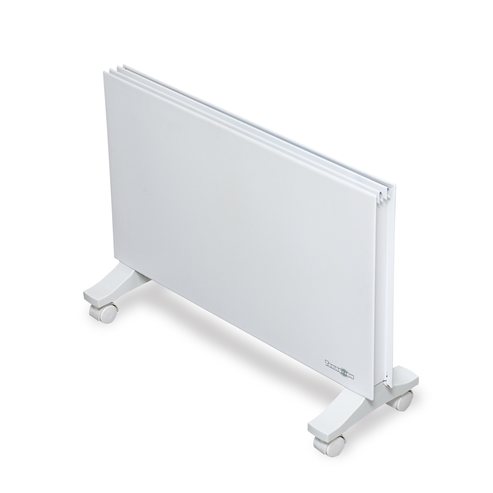
- Ceiling.

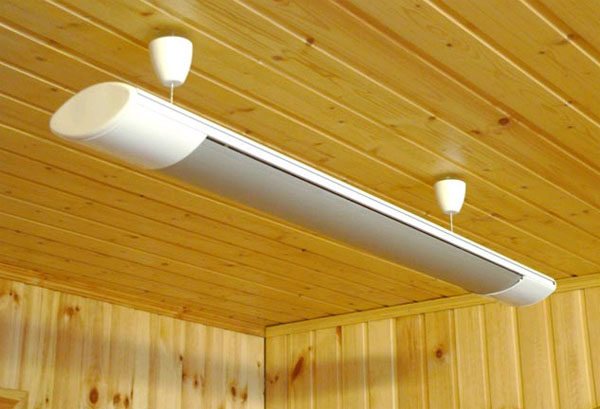
- Wall mounted.

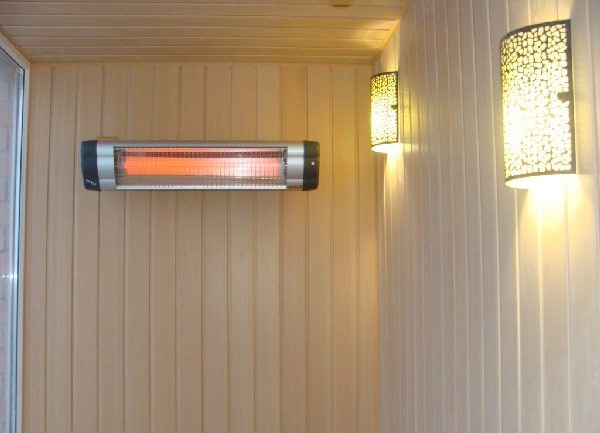
There are also IR film heaters, which are made in the form of:
- The panels are thin rectangular, with a flat surface, equipped with heating elements.
- Heat lamps with special reflectors and spiral heating elements.
- Polymer film with a thin layer of heating parts.
All film-type heaters are fixed to the ceiling or mounted in the floor.
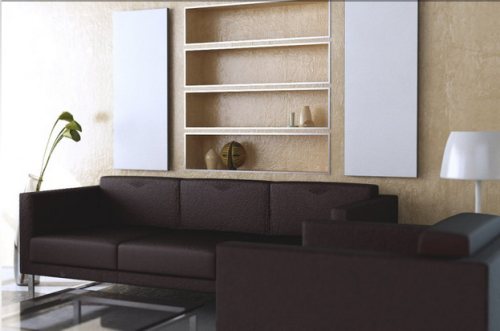

Panel infrared heaters
Heaters also differ not only in shape (film, plate, spiral), but also in the material from which they are made. There are:
- Quartz devices, they use a tungsten filament sealed in a vacuum quartz tube or monolithic tile, consisting of quartz sand.
- Halogen plants using an inert gas as a source of infrared rays.
- Carbon heaters that use carbon fibers or wafers as a radiation source.
- Ceramic, which are composed of matching plates to distribute heat evenly.
Types of gas heaters
All types of gas heating appliances for garages are divided into two types of models:
The first option is usually performed in the form of a powerful convector for main gas, more precisely, a mixture of gases produced and transported through a gas pipeline, in which methane predominates. He needs to supply a pipe with fuel and make a chimney.
Such devices are rarely installed in garages. A compact mobile analogue, designed to operate from a cylinder, is cheaper, easier to install and does not require approvals to connect.
According to the design and principle of operation, gas heaters are infrared and convection. To stimulate the movement of heated air, convection models can be equipped with a fan or not. Each of these types has its own advantages.
Option # 1 - infrared
The operation of infrared heating devices is based on the principle of "thermal radiation" of electromagnetic waves with a length in the region of 9.2 microns. Such infrared rays quietly pass the air in the room without delay and heat the surfaces opposite the heater. And already from the walls, ceiling and various objects, heat dissipates further through the room.
The source of radiation in an infrared gas-fired device can be a direct open flame or a ceramic heating element that receives energy from the combusted fuel. Further, the IR rays are directed in the desired direction with the help of a reflector.
Infrared gas equipment for space heating:
- does not require electricity for operation;
- it is compact in size;
- economical;
- silently;
- does not create convection and does not raise dust.
The basic disadvantage of IK gas heaters for arranging a garage or summer cottage is a narrow beam of heat. After switching on, the infrared emitter heats in the treated space only those surfaces where it is directed.
At the same time, walls and objects outside the range of the device remain cold without direct heating. As a result, a situation is possible when one corner in the room is hot and comfortable for repairing the machine, and pulls cold from the other.
For small garages, infrared propane devices in the form of ceramic furnaces with a cylinder inside or compact emitters-panels are most suitable. Both options usually have an oxygen sensor and gas leaks, and fire protection. The power of such equipment is designed for heating garages with an area of 4 to 40 sq. m.
Why do you need a thermostat
A thermostat in an IR heater, if you use it in the country, is a necessary thing, if not more necessary. In a simplified form, this is a thermometer that itself measures the temperature and brings it to the required indicators. For example, if you are in the house, you can set the temperature in the range of 20-22 degrees, and it will be maintained at this level automatically. If you are absent somewhere, then it is rational to lower the boundary indicator, up to +5 degrees, so that the house does not freeze through. Upon returning, it will not be difficult to raise the temperature to a comfortable level, since the room did not freeze.
Such a rational setting of the temperature regime will allow not only to have savings in payment for energy resources (gas or electricity), but also to create an optimal microclimate in a room with irregular living.
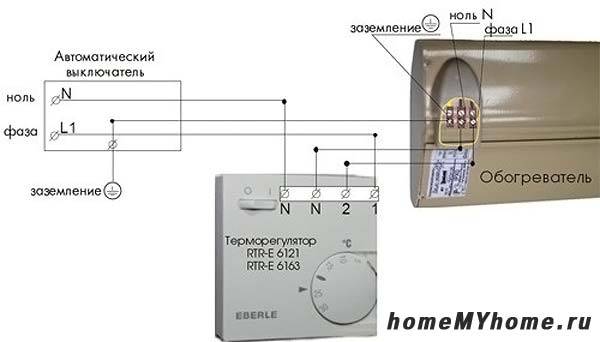

Connecting IR heaters through a thermostat
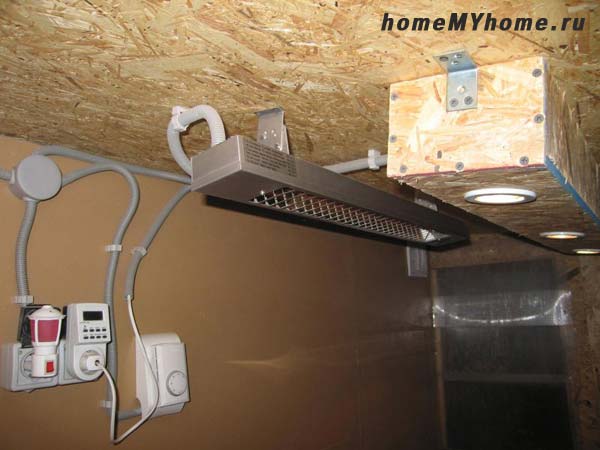

An example of a practical connection of a thermostat
What devices with a thermostat are suitable for use in the country
Let's consider some of them in more detail:
- Ceiling infrared heaters, which are stationary devices. They come in the form of panels, films or lamps, similar in appearance to fluorescent ones. These devices can significantly save space, they warm up a fairly large area of the room well. Taking into account the difficult access to them, the devices are equipped with thermostats and remote controls.
- Wall-mounted IR devices are also of the stationary type. They sometimes differ a little more weight than ceiling options. They are made in the form of panels of various colors and shapes. Wall-mounted IR installations can be in the form of photographs, beautiful paintings, volumetric and relief drawings. They fit well into any interior, they can serve as decoration. Thermostats in these devices can be built-in or outside the device. It is advisable to place such devices higher, for better heating of the room and for safety reasons.
- Outdoor infrared heating portable devices.They can be carried anywhere in the room or home. Unlike previous types, floor heaters take up additional floor space. Made in the form of lamps or panels, they are completed with special stands in the form of tripods or stand legs for a stable position. Almost all floor units have built-in rollover sensors. But not all floor-standing models are equipped with thermostats.
Sources of
- https://ventilsystem.ru/klimaticheskaya-texnika/obogrevateli/infrakrasnye/nastennye/ik-obogrevateli.html
- https://www.tehnoprosto.ru/top-8-luchshie-infrakrasnye-obogrevateli-dlya-doma-i-dachi/
- https://Tehnika.expert/klimaticheskaya/obogrevatel/infrakrasnye-s-termoregulyatorom-dlya-dachi.html
- https://remont-system.ru/radiatory-i-obogrevateli/nastennye-infrakrasnye-obogrevateli
- https://ThermoMir.ru/doc/recomend/help_obogrevateli_2/obogrevateli_s_termodatchikom
- https://HomeMyHome.ru/infrakrasnye-obogrevateli-s-termoregulyatorom-dlya-dachi-luchshij-vybor-vremennogo-otopleniya.html
[collapse]


